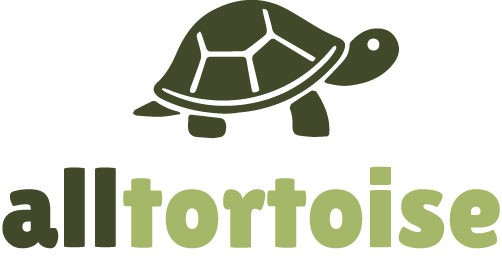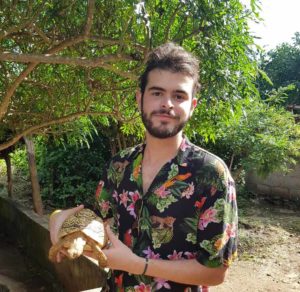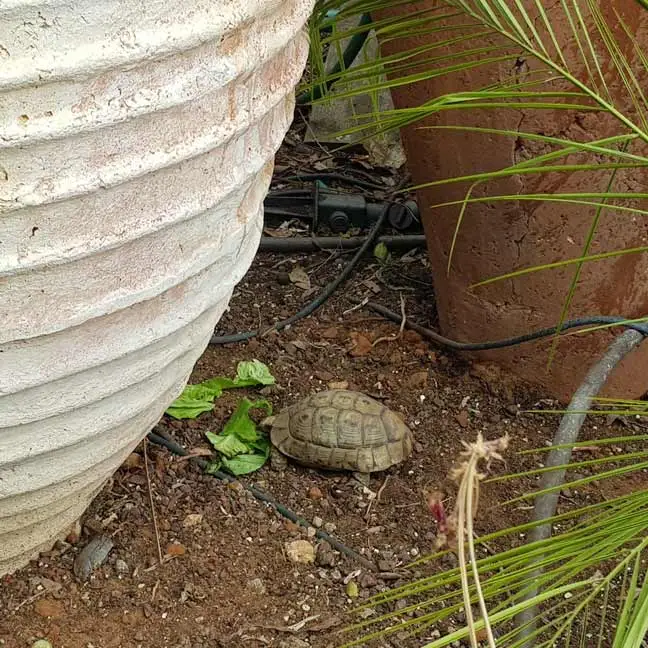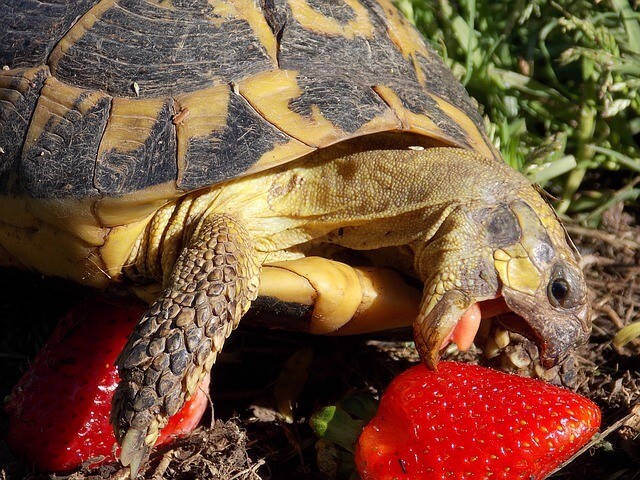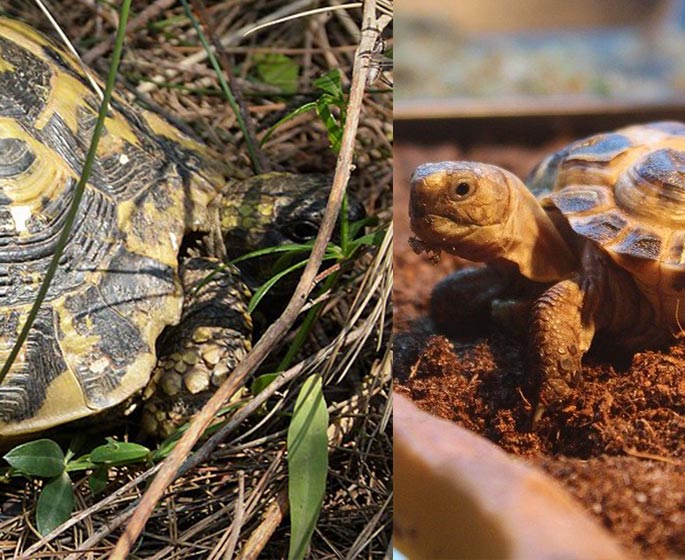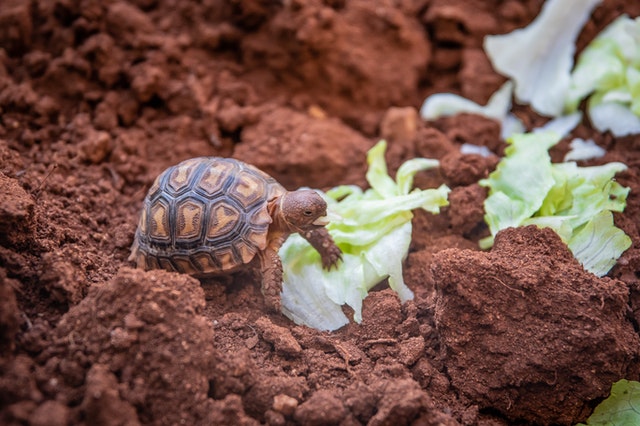Russian tortoises aren’t among the usual animals you may consider a pet, so proper Russian tortoise care might not be common knowledge. Anyone who chooses to have tortoises as pets must probably not visit a pet store or buy one immediately. It is smart to get as much information as possible prior to getting one. You can research Russian tortoises online or check out some books dedicated to the subject at the book store or library.
When considering getting a Russian tortoise, it is helpful to seek out skilled and professional breeders’ ad veterans’ advice to determine if you are fit to be an owner of this animal. In the process, you might be surprised to know that in spite of their behavior and appearance, taking care of Russian tortoises isn’t a simple task. On the other hand, with the right care, these cute, small creatures will have an expected lifespan of over fifty years and might not even outlive their owners.
Russian tortoises are different from turtles, where they cannot swim and are land-dwellers. Russian tortoises are likely to drown in deep water. On the other hand, they do need water for bathing and drinking. A potential owner must consider providing his pet both an outdoor and indoor enclosed habitat, even if some experts claim an inside enclosure is enough. The environment of your Russian tortoise should be designed in a way that replicates the natural home of the animals in the wild. Three square yards of space must be allotted for each 12-inch tortoise to allow for its development. A hiding place must be made, and materials that will let the tortoise burrow, retreat, soak as well as a drink should be used. The enclosure must be tough and high enough to keep them from climbing out and staying.
Proper Russian Tortoise Diet
A Russian tortoise is a plant-eater and loves to eat green leafy vegetables. They must consume a rich fiber diet of dark lettuces, hay, and greens like kale, collards, mustard, turnip, and dandelion, together with different vegetables, including corn squash carrots, peppers, sweet potatoes, and prickly pear cactus. Also, they should provide a small amount of fruit like berries and apples.You should keep track and know how often your tortoise should eat A Russian tortoise must not be given nutrient-deficient iceberg lettuce, meat, or grains.
While pellet diets are available for Russian tortoises, some have an excess amount of starch and aren’t nutritionally balanced. Even if opinions on supplementation vary, varied veggie-based diet supplementation with a bit of calcium powder that contains D3 vitamin two times a week is preferable, particularly if you housed them indoors with limited ultraviolet light exposure or when pregnant or growing.
Non-breeding adult Russian tortoises housed indoors with full ultraviolet exposure and fed a varied diet don’t need regular calcium and vitamin supplementation.
You must provide your tortoise with water in a shallow bowl in which he can soak to keep hydrated and must be changed on a regular basis. Russian tortoises often defecate in the water bowl if they soak; it might be good to soak the outside of the enclosure a couple of times a week for 30 minutes to avoid having to change their drinking water. A baby tortoise suffers from dehydration at a high temperature and must be soaked in a thin pan of tepid water at least three times a week.
Russian Tortoise Wellbeing
Even if a Russian tortoise, in general, is a hardy reptile, he can suffer from GI parasites which can lead to weight loss and diarrhea and which might be transmittable to the owner.
Most gastrointestinal parasites can be eradicated with treatment once a vet determines them in a stool sample. This animal commonly develops respiratory tract infection if housed in too much damp or cool condition or is fed improperly.
A growing tortoise housed with no UV light or if not given with enough calcium is subject to having metabolic bone illness wherein they have an imbalance of phosphorus and calcium in their systems, resulting in softshells, severe weakness, and bone fractures, as well as death when left uncured.
Proper Supplementation is Important
Russian tortoises need additional supplementation of calcium. A lot makes calcium powder of different brands; however, choose products that don’t have vitamin D3 or phosphorus regardless of the brand you purchase. It must be spread or mixed onto his food at once daily for one-year-old tortoises or less and two to three times a week for a grown-up.
Multivitamins are also vital to promote good wellbeing and proper body function. There are a lot of brands that make vitamins appropriate for tortoises. Vitamins, most particularly fat-soluble vitamins like vitamin A and D, are simple to overdose, and excess multivitamin supplementation can be dangerous. As a general rule, multivitamin supplementation must be mixed on the food once a week,
Proper Lighting and Heating
If you housed your Russian tortoises indoors, they must be given cool and warm areas. You can maintain the worthiness using ceramic heat lamps at a daytime temperature not lower than 70 degrees Fahrenheit at the cool end of their enclosure. A basking corner is kept at 90 degrees to 100 degrees Fahrenheit at the warm end. If the lights are off, evening temperatures must not fall under the mid-50s degree Fahrenheit. The basking part must have a UV light to replicate the sunlight and allow the pet to produce vitamin D, which is vital to assimilating calcium from food. You can also use a mercury vapor bulb to give ultraviolet and heat to your pet’s habitat. You can also keep the light sources for 12 to 14 hours a day.
Always bear in mind that tortoises have a wide array of species with exceptional and varied preferences to thrive in terms of their environment and living space. The temperature of the natural habitat in which your pet originated will greatly affect the considerations and necessities if you have a plan of bringing your pet inside. Bring your pet inside your house overnight during cooler weather. Special considerations are given to some species that are needed to hibernate. This could be quite stressful for the tortoise, and the owners should know this need.
Ensure A Tough and Durable Pen
If you have a plan of constructing an outdoor pen for your tortoise, it is highly recommended to make sure of the toughness of the fence. Bury the fences if you have a burrowing tortoise. The kind of pen you will make must be based on the characteristics and behaviors of the species where the pet came from. For a stronger and older tortoise, you have to ensure that the fence is durable enough to contain your pet.
Avoid Installing Obstacles and Climbing Areas
Avoid putting obstacles and climbing areas around your pen. Otherwise, you’re inviting accidents. If your Russian tortoises accidentally trip on its back, it can cause detrimental injuries.
When is the Best Time to Take Russian Tortoises for Vet Care?
Russian tortoises don’t bring their animals for regular, preventative medical check-ups as their pets look healthy and have no issues. On the other hand, many medical issues in reptiles develop slowly, with an indication of the illness becoming apparent just late in the course of illnesses after the sickness has progressed and frequently is no longer treatable.
All types of reptiles, which include Russian tortoises must be checked and assessed by an expert vet if they are first acquired and then yearly after that, although they do not appear or look sick. They must have a stool sample assessed yearly for GI parasites and usually must be de-wormed if GI parasites are detected. Your pet must be weighed yearly to make sure that they’re growing properly, as full size might not be obtained for a lot of years.
Surely, if your pet is sluggish, not eating or has diarrhea, or has discharge from its nose or eye, or has an issue in breathing, it must be checked right away. Tortoises and other reptiles get sick gradually and get better slowly; therefore, the key to a healthy tortoise is preventative care to avert illness and fast intervention if a disease does happen.
Conclusion
It is noteworthy that Russian tortoises can just be handled when they’re young. They must be picked up and well-handled so as not to pressure and stress them. Anyone who handles Russian tortoises should be certain to wash their hands afterward in order to keep away the threat of salmonella infection. Children and pregnant women, and those with low immunity must never touch them. What is more, adult tortoises hibernate for 2 to 3 months, and they should be cleaned daily and well-fed before they hibernate.
Sad to say, Russian tortoises are endangered. If you own one at present or are in the planning stages of getting on, make sure that you know how to take care of them properly and have the time and commitment needed to do so for decades. This way, your Russian tortoise will keep healthy and live a happy and long life, a feat that any good owner would need and want.
